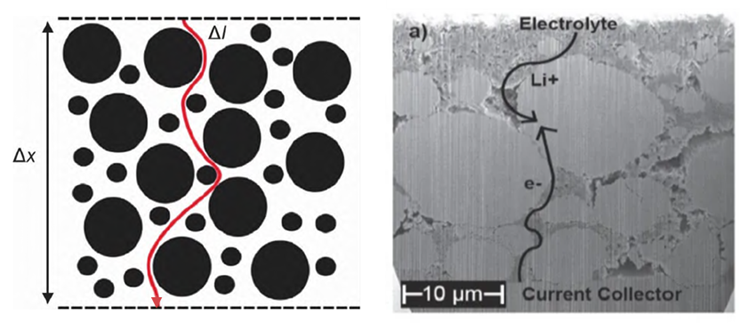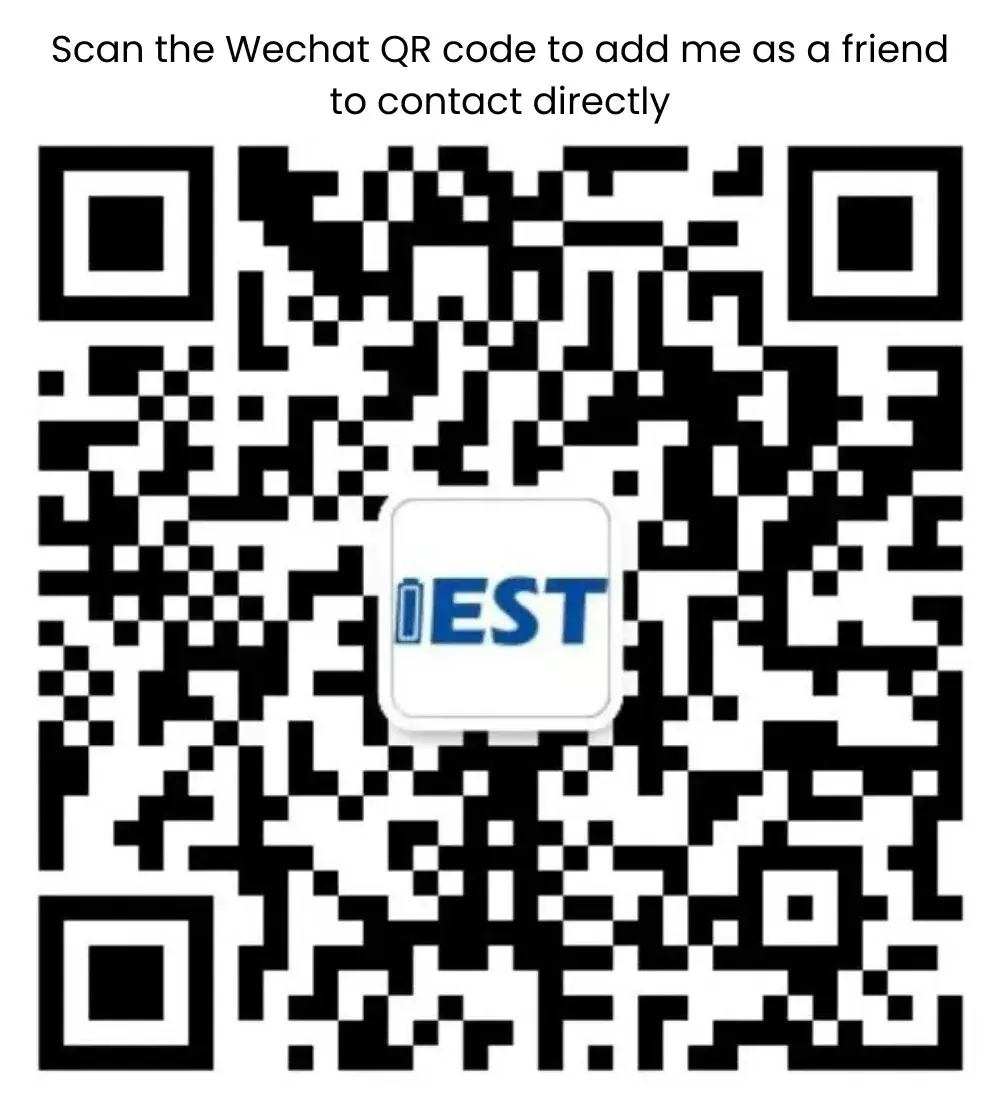-
iestinstrument
Want Megawatt Flash Charging? Electrode Tortuosity Parameter Might Be Crucial
1. Introduction
Recently, BYD’s “Megawatt Flash Charging” technology has attracted significant attention in the lithium battery field. Its “5-minute charge for 800-mile range” oil-electric equivalent technology is as strategic as a nuclear bomb. The “Megawatt Flash Charging” technology can boost the charging voltage up to 1000V and push the charging current beyond 1000A, achieving an astonishing charging power of 1MW (1000 kW). This imposes enormous challenges on the fast-charging performance of lithium-ion batteries. In addressing these challenges, a key parameter hidden behind the electrode fabrication process is the electrode tortuosity—or, in other words, the ionic conductivity of the electrode. This parameter is the fundamental “code” that determines whether lithium ions can “move quickly” within the battery or electrode. This article primarily discusses how the key parameter of electrode tortuosity affects the fast-charging performance of lithium-ion batteries in the face of megawatt flash charging challenges. It explains that by optimizing electrode structures and processes—such as gradient pore design, conductive network optimization, and micro-concave coating techniques—tortuosity can be reduced, thereby enhancing ion transport efficiency for faster charging.
2. Electrode Tortuosity: The “Traffic Engineering” of Battery Fast Charging
If we compare lithium ions to “commuter vehicles,” the structure of the electrode represents the urban road network they must traverse. The physical parameter known as tortuosity precisely characterizes the “congestion index” of the lithium ion migration pathways. As illustrated below [1,2], if the electrode exhibits high tortuosity, the lithium ion “vehicle” moves at a sluggish, tortuous pace—akin to crawling through winding alleys—seeking appropriate sites to combine with electrons, thereby significantly reducing the battery’s fast-charging capability. Conversely, if the electrode has low tortuosity, the lithium ion “vehicle” can speed along a multi-lane highway, rapidly reaching the target sites for electron combination, which naturally results in much faster charging and discharging rates. Traditional graphite electrode tortuosity in the range of 3 to 7, whereas novel fast-charging electrodes can reduce this parameter to below 1.5.

Figure 1. Schematic diagram of tortuous path of transmission in porous media
3. Advanced Fabrication Techniques to Reduce Electrode Tortuosity
In electrode manufacturing, engineers have employed a “mesoporous scaffold + nano-network” three-dimensional composite structure to reduce electrode tortuosity by 40%, thereby achieving the breakthrough of charging 80% capacity in just 15 minutes. This approach is analogous to constructing an elevated urban transportation hub in a city center, freeing lithium ions from the burden of taking detours. The specific implementation includes:
- Gradient Pore Design: Constructing hierarchical pores ranging from 10 to 100 nm within a 20 μm thick electrode.
- Optimization of the Conductive Network: Increasing the addition of carbon nanotubes from 0.5% to 1.2% to form a three-dimensional conductive scaffold.
- Electrode Formation Process: Utilizing micro-concave blade coating technology to control the electrode’s areal density deviation to within ±1.5%.
Below is a comparative table of data from several companies:
| Company | Electrode Tortuosity | Charge Rate | Technical Route |
|---|---|---|---|
| CATL | 1.3 | 4C | Dual continuous mesoporous structure |
| Tesla | 1.8 | 3C | Dry electrode + full tab design |
| LG | 2.1 | 2.5C | Graphene-coated current collector |
4. The “Sword and Shield” of Technical Breakthroughs
While pursuing lower electrode tortuosity, there is a risk of reducing the overall compaction density of the electrode, which may lead to a decline in the battery’s energy density. Engineers must resolve this technical dilemma. CATL, for instance, has managed the trade-off between energy density and fast-charging performance. It has achieved a balance by employing a porous silicon-carbon anode (with 35% porosity and an initial coulombic efficiency of 92%); specifically, by increasing the silicon content in the anode and simultaneously using nano-silicon crystals (with a particle size of <150 nm) to suppress the charging-induced expansion, and then matching this with medium-nickel or high-nickel ternary cathodes to ensure that the energy density is not significantly compromised. Meanwhile, Tesla is optimizing the trade-off between electrode thickness and mechanical strength: its 4680 battery’s dry electrode process has broken traditional limits by reducing the electrode thickness from 120 μm to 80 μm while effectively lowering the binder content, thus increasing the electrode’s compaction density. Gotion High-Tech, on the other hand, has balanced cost with technical strategy by choosing the lithium iron phosphate system paired with 4C fast-charging technology. They use a porous carbon coating technology with an addition of 0.5% single-walled carbon nanotubes, combined with a high-voltage electrolyte (tolerating up to 4.4V), thereby controlling costs while achieving a fast charge from 30% to 80% in just 25 minutes.
5. IEST Instrument: The Pioneer in Electrode Tortuosity Characterization
Traditional methods for characterizing electrode tortuosity involve assembling pouch cells for Electrochemical Impedance Spectroscopy (EIS) tests and extracting the ionic conductivity from the data. This approach requires the use of a glove box environment and involves complex, time-consuming assembly processes. To simplify this process and reduce the need for auxiliary equipment, IEST Instrument has independently developed the EIC2400 electrode tortuosity tester. As shown in the image below, this device integrates three major systems—automatic air exchange, automatic electrolyte injection, and automatic EIS testing—thus establishing a water- and oxygen-free test environment without the need for an external glove box. Its four-channel automatic electrolyte injection and EIS testing significantly enhance user assembly and testing efficiency, making it a compact, user-friendly, and reliable disruptive device in the industry.
6. Conclusion
As the “high-speed ionic highway” network within power batteries becomes increasingly sophisticated, the long-standing charging anxiety of electric vehicles will eventually be relegated to history. From molecular design in material laboratories, to precision manufacturing in factories, and finally to every second counting at the charging station, this technological revolution—aimed at enabling lithium ions to “move faster and more smoothly”—is reshaping the relationship between humans and energy. Perhaps in the near future, the phrase “charging is faster than refueling” will no longer be just a marketing slogan, but a daily reality for every new energy vehicle owner.
7. References
[1] C. Wang, A. Zhang, Z. Chang, S. Wu, Z. Liu, J. Pang, Progress in structure design and preparation of porous electrodes for lithium ion batteries. Materials Engineering 50 (2022) 67-79.
[2] J. Landesfeind, J. Hattendorff, A. Ehrl, W.A. Wall, H.A. Gasteiger, Tortuosity Determination of Battery Electrodes and Separators by Impedance Spectroscopy. J. Electrochem. Soc. 163 (2016) A1373-A1387.
Subscribe Us
Contact Us
If you are interested in our products and want to know more details, please leave a message here, we will reply you as soon as we can.



